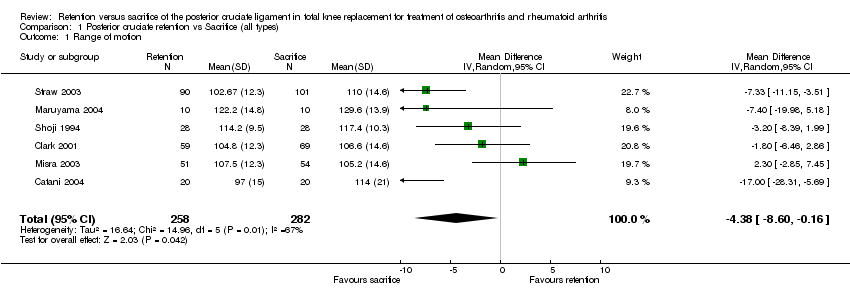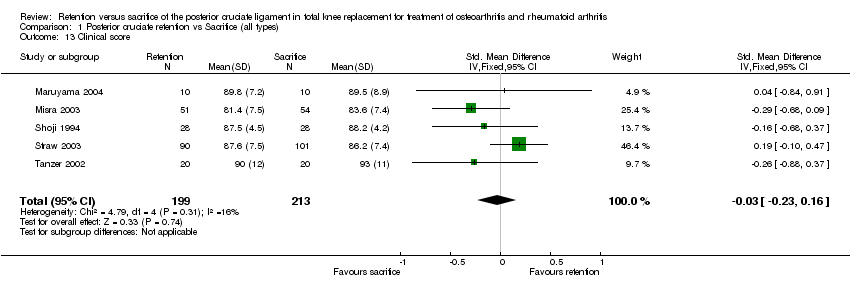Contenido relacionado
Revisiones y protocolos relacionados
Wiebe C Verra, Lennard GH van den Boom, Wilco Jacobs, Darren J Clement, Ate AB Wymenga, Rob GHH Nelissen | 11 octubre 2013
Stefanie N Hofstede, Klaas Auke Nouta, Wilco Jacobs, Miranda L van Hooff, Ate B Wymenga, Bart G Pijls, Rob GHH Nelissen, Perla J Marang‐van de Mheen | 4 febrero 2015
Lisa A Harvey, Lucie Brosseau, Robert D Herbert | 6 febrero 2014
Gilberto Yoshinobu Nakama, Maria Stella Peccin, Gustavo JM Almeida, Ozório de Almeida Lira Neto, Antônio AB Queiroz, Ricardo Dizioli Navarroa | 17 octubre 2012
Brigitte M. Jolles, Earl R. Bogoch | 19 julio 2006
Reinoud W Brouwer, Maarten R Huizinga, Tijs Duivenvoorden, Tom M van Raaij, Arianne P Verhagen, Sita MA Bierma‐Zeinstra, Jan AN Verhaar | 13 diciembre 2014
Lisa A Harvey, Owen M Katalinic, Robert D Herbert, Anne M Moseley, Natasha A Lannin, Karl Schurr | 9 enero 2017
Anne Wajon, Toby Vinycomb, Emma Carr, Ian Edmunds, Louise Ada | 3 abril 2017
Brenda Monaghan, Brian Caulfield, Dónal P O'Mathúna | 20 enero 2010
Lynn Casimiro, Les Barnsley, Lucie Brosseau, Sarah Milne, Vivian Welch, Peter Tugwell, George A Wells | 19 octubre 2005


















